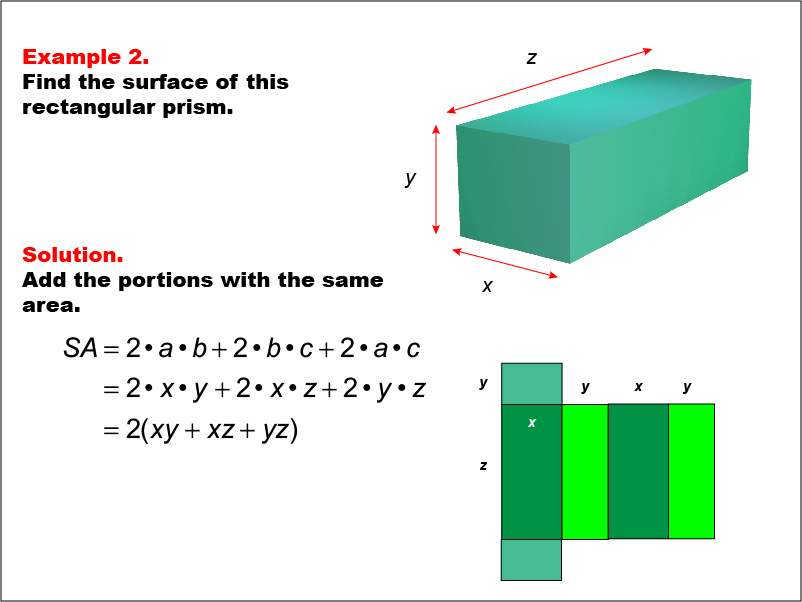
Display Title
Math Example--Area and Perimeter--Surface Area: Example 2
Display Title
Math Example--Area and Perimeter--Surface Area: Example 2

Topic
Surface Area
Description
This example introduces a general formula for calculating the surface area of a rectangular prism with dimensions x, y, and z. The surface area is computed using the formula SA = 2xy + 2xz + 2yz, which can be simplified to 2(xy + xz + yz). This generalized approach allows for easy application to prisms of various sizes.
Surface area calculations are fundamental in mathematics, with applications ranging from manufacturing to environmental science. This collection of examples aids in teaching the topic by presenting both specific and general cases, helping students understand how to apply formulas flexibly to different scenarios.
Engaging with multiple worked-out examples is essential for students to fully grasp the concept of surface area. Each example reinforces the core principles while introducing variations, enabling students to develop a robust understanding and the ability to tackle diverse problems independently.
Teacher's Script: In this example, we're looking at a general formula for the surface area of a rectangular prism. Notice how we use variables instead of specific numbers. This approach allows us to calculate the surface area for any rectangular prism once we know its dimensions. As we progress, think about how this general formula relates to the specific example we saw earlier.
For a complete collection of math examples related to Surface Area click on this link: Math Examples: Surface Area Collection.
| Common Core Standards | CCSS.MATH.CONTENT.7.G.B.6 |
|---|---|
| Grade Range | 6 - 8 |
| Curriculum Nodes |
Geometry • Surface Area and Volume • Surface Area |
| Copyright Year | 2013 |
| Keywords | surface area |